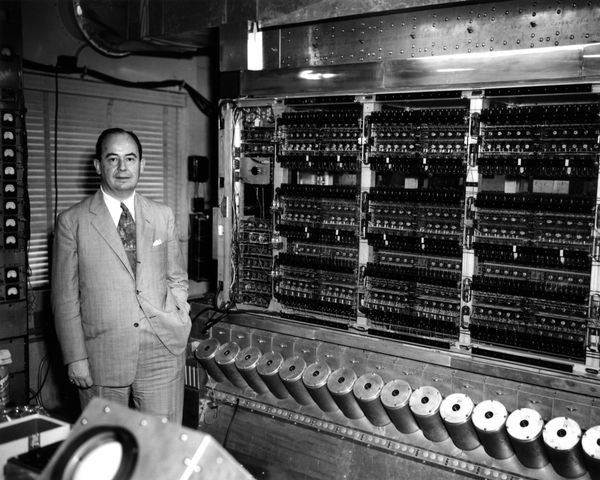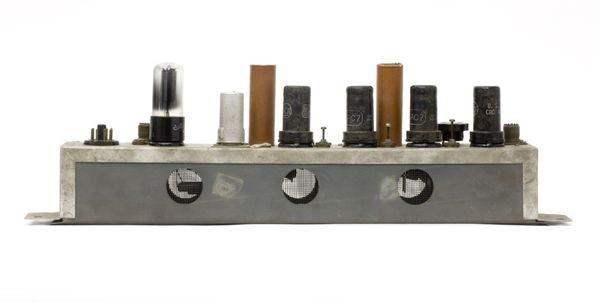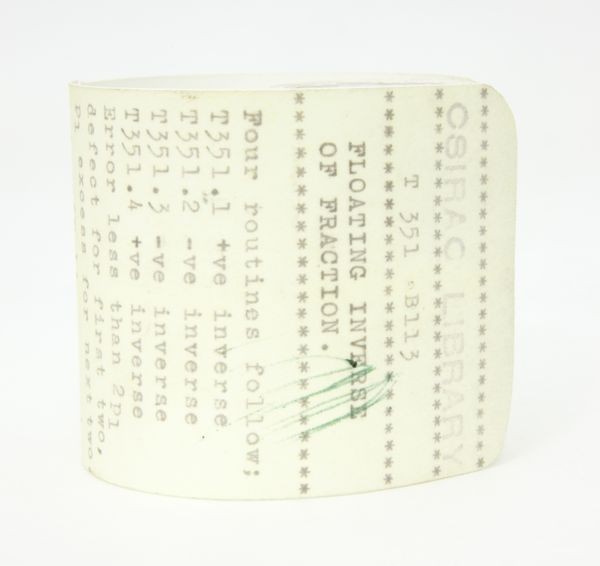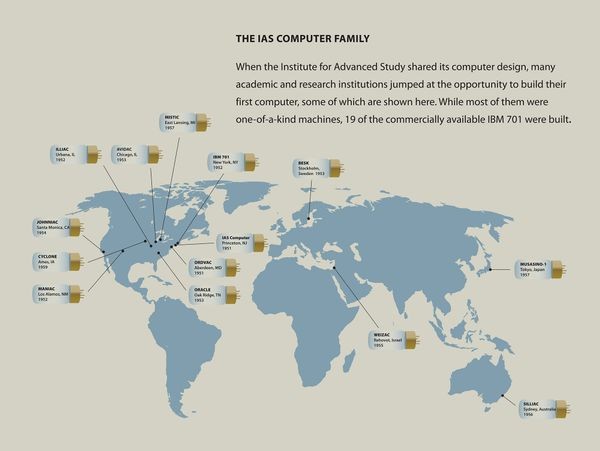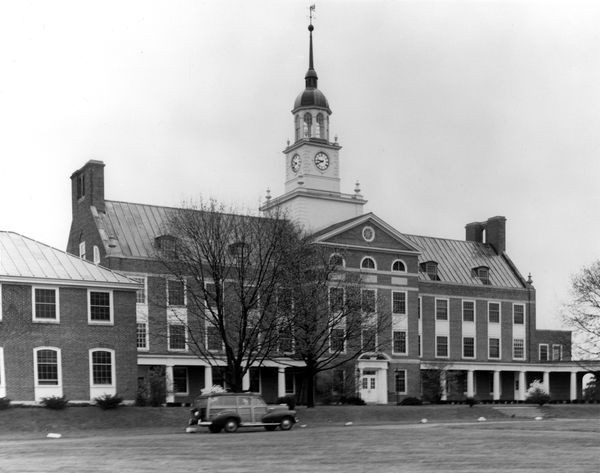The First Generation
John von Neumann with the IAS Computer
Von Neumann persuaded IAS to expand from doing theoretical studies to building a real computer, with meteorology calculations as a key test of its scientific value. The cylinders at the bottom are the Williams-Kilburn memory tubes.
The First Generation
Once the world had seen a stored program computer, the advantages were obvious. Every university, research institute and lab wanted one of its own. But where to get one?
There were no commercial manufacturers of electronic, stored-program computers. If you wanted one, you had to build one. Many of these early machines relied on published designs. Others were developed independently.
CSIRAC module
Some first-generation computers were unique designs, like the CSIRAC, built in Sydney, Australia by British-born Trevor Pearcey. The SILLIAC, based on the von Neumann IAS design, was built there a few years later.
View Artifact DetailResearchers with MESM computer
When the MESM computer went into regular operation in 1951, the age of electronic computing in the Soviet Union had begun. Designed by Sergey Lebedev, it was built in a former monastery and psychiatric clinic near Kiev, Ukraine.
View Artifact DetailCSIRAC paper tape (replica)
CSIRAC used this unusually wide 12-hole paper tape for its programs. This replica tape is from a program library that implemented mathematical operations such as logarithms and trigonometric functions.
View Artifact DetailInvention and Influence: The Institute for Advanced Study
Like stones tossed in a pond, groundbreaking ideas nurtured at Princeton’s Institute for Advanced Study (IAS) sent ripples through the computer world, inspiring labs and technology companies around the globe.
The IAS project to develop a stored-program computer was initiated in 1946 by mathematician John von Neumann, joined by alumni of the Moore School’s ENIAC project.
The computer was operational by 1951, and the IAS made its design freely available. This “open source hardware” begat similar machines around the world, as well as a host of variations on the IAS theme.
The IAS Computer Family
When the Institute for Advanced Study shared its computer design, many academic and research institutions jumped at the opportunity to build their first computer, some of which are shown here. While most of them were one-of-a-kind machines, 19 of the commercially available IBM 701 were built.
View Artifact DetailInstitute for Advanced Study (IAS)
The Institute for Advanced Study was founded in 1930 in Princeton, New Jersey by a grant from philanthropist and department store magnate Louis Bamberger. Alumni include mathematicians Gödel and Von Neumann, physicists Oppenheimer and Einstein, and art historian Panofsky.
View Artifact Detail